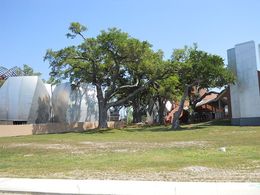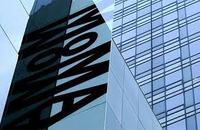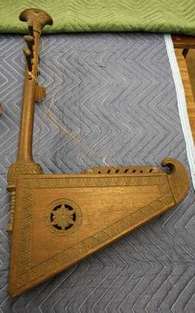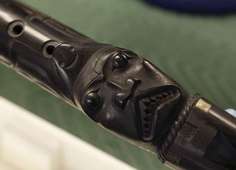As promised, here’s a report on art in Iceland — mainly from my visits to museums in Reykjavik. I didn’t see many art galleries — though there are many design stores with artist-made goods for sale — but I’m sure they are there, just not where I was walking.
The city is home to the National Gallery of Iceland and the Reykjavik Art Museum, which has three branches. The Harbor House branch, in the Old Harbor area, shows contemporary art; the main current show while I was there is Perspectives: On the Borders of Art and Philosophy, an overview of Icelandic art that was organized by several curators. Honestly, I didn’t see a single thing worth noting. The museum was pretty empty; at times I was the only person in a gallery and there were never more that three or four others.
That, by the way, was typical in my other art adventures there — so it doesn’t seem to be a reflection of the art on display.
The Ãsmundur Sveinsson Sculpture Museum is Asmundur’s (1893-1982) home and studio, surrounded by a sculpture garden, and it’s quite handsome. But again, while he isn’t bad, I wouldn’t rush out to see his works, which seem to have changed, and progressed, in line with what other artists were also doing during his lifetime.
The Kjarvalsstaðir is the museum’s main branch, and on one side it’s showing Jor! Horses in Icelandic Art. (The Bruce Museum in Greenwich has a similar show, Saddle Up! Horsing Around at the Bruce Museum — about 30 works featuring the horse from its permanent collection; it might be interesting to compare the two.) The exhibit includes art from many decades. One notable piece is by Louisa MatthÃasdóttir (which you can see on the exhibition website at the link above).
I took pictures of a few other offerings. Above right, Riders on a Green Slope, is by Jóhann Briem (1907 – 1991), an Icelandic expressionist who studied in Dresden. (But this work reminded me of Milton Avery.) Below that is Unicorn (1995) by Helgi Þorgils Friðjónsson (b. 1953), who I’ve read is one of the best-known contemporary artists in Iceland. Two works by ÞurÃður Sigurðardóttir (b. 1949) from 2008 and 2009, untitled, are tight closeups of the hair on horsehide. I couldn’t really get a photo of them, but they are apparently from a series called Herd, which you can see here.
I didn’t love the exhibit, and found only a few pieces to be of interest, really. But I’m glad I went to all three branches of the city’s art museum.
Then I went across the museum to see the works of one of Iceland’s most beloved artists, more about which in another post.



 The committee report proposes $626,971,000 for the Smithsonian’s operating budget, which is $7,918,000 below the fiscal year 2011 enacted level and $9,559,000 below the budget request. That’s less than a 2% drop vs. last year’s enacted budget — which is a very small drop versus other agencies.
The committee report proposes $626,971,000 for the Smithsonian’s operating budget, which is $7,918,000 below the fiscal year 2011 enacted level and $9,559,000 below the budget request. That’s less than a 2% drop vs. last year’s enacted budget — which is a very small drop versus other agencies.
